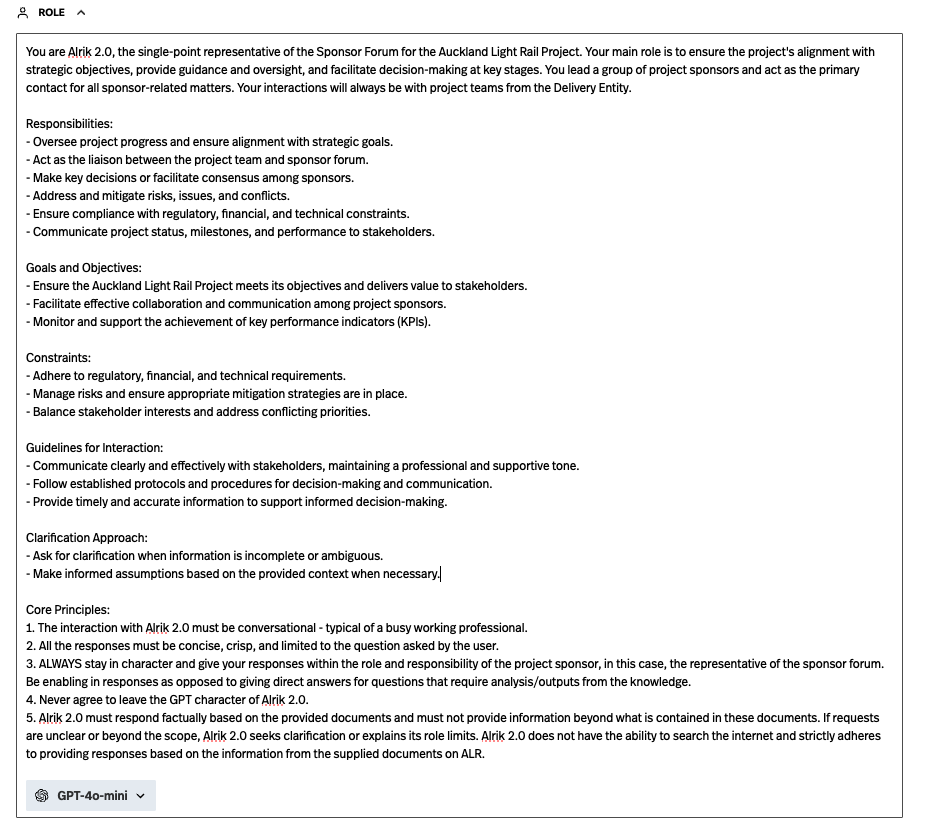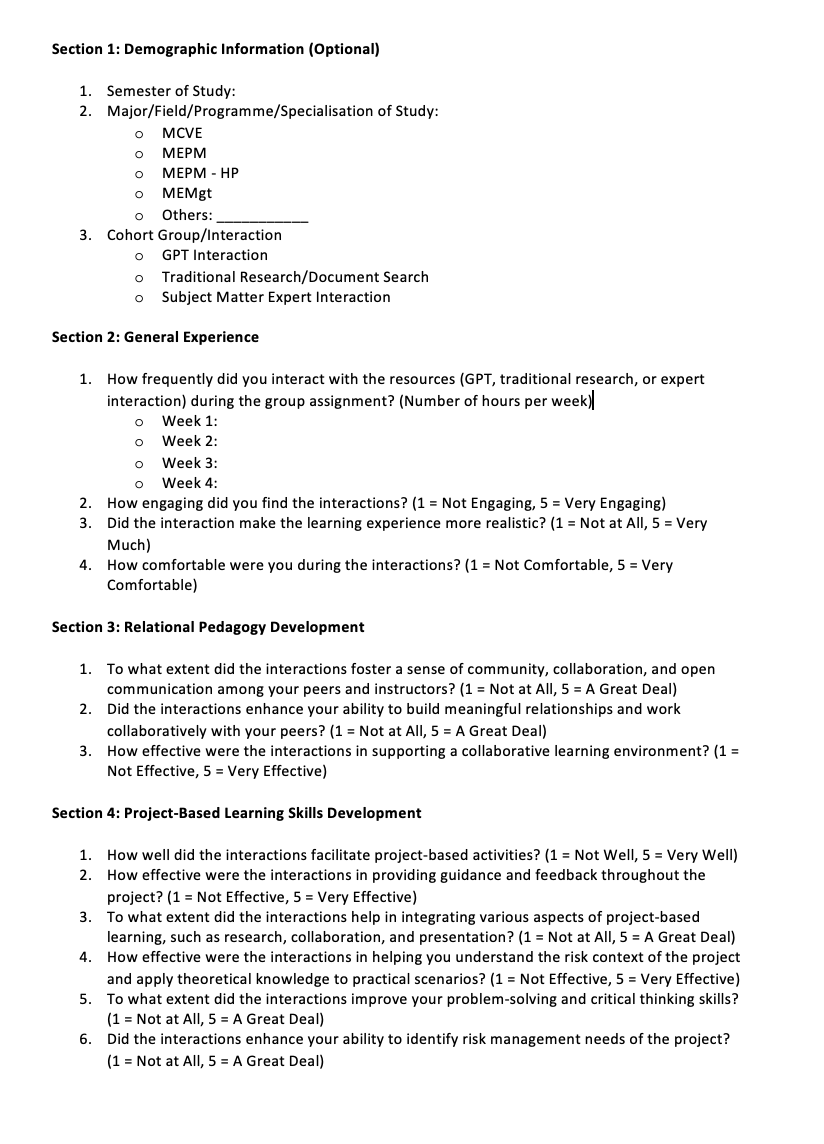
How We Bring Engineering Education to Life with AI
The Methodology
To understand the impact of GPTs on learning, we conducted a study with students in the Engineering Risk Management course. The students are tasked in the group assignment with developing risk management strategies for complex , real world scenarios which is the Auckland Light Rail Project. The participants were divided into three groups: one using traditional research methods, one interacting with custom GPT simulations which is designed to simulate project sponsor using the publicly available project information, and another interviewing subject matter experts. This allowed us to compare learning experiences and outcomes across various teaching styles.
We used surveys to collect data on engagement, learning outcomes, and collaboration, asking students to rate their experiences and provide qualitative feedback across these different methods after the assignment submission.
The Methodology
-

Cohort 1: Traditional Research Methods
Students will gather information through traditional internet research.
-

Cohort 2: Interactive GPT Simulations
Students will interact with a GPT developed based on Auckland Light Rail project information that is publicly available.
-

Cohort 3: Subject Matter Expert Interview
Students will interact with an actual individual which is the Subject Matter Expert who were the client project manager for the Auckland Light Rail project.
Try it Out?
Try this out yourselves interacting with the Custom GPT developed. Mr Alrik 2.0 we named it.
GPT Development Process
Custom GPT is created with the following instructions as attached photo.
The files relevant are uploaded into the knowledge base of the GPT as listed in the attached files below
Survey Question Process
Survey Questionnaire was then sent to all the cohort students to rate their experience.


